Carstens Tönnieshof
Vintage Red and Grey Vase - Carstens 1518-23 "Austria" - 1960s
Vintage Red and Grey Vase - Carstens 1518-23 "Austria" - 1960s
Couldn't load pickup availability
This Carstens 1518-23 "Austria" vase exemplifies mid-20th-century European ceramic artistry. Its grey base is accentuated by a vibrant red band encircling the centre, adorned with a dark geometric line pattern. A distinctive feature is its interior, glazed in a striking blue-turquoise hue, offering a delightful contrast to the exterior.
Carstens, established by brothers Christian and Ernst Carstens in post-war West Germany, expanded production to various countries, including Austria, during the 1960s. This strategic move allowed them to navigate export challenges and cater to diverse markets. Pieces marked with "Austria" were produced during this period, reflecting Carstens' commitment to quality and design innovation across borders.
- Material: Ceramic
- Model: Cartens Tönnieshof 1518-23 "Austria"
- Style: Mid-Century Modern / Brutalist
- Technique: Hand-glazed
- Place of Origin: Germany
- Mark: 1518-23 "Austria"
- Date of Manufacture: 1960s
-
Condition: Good condition with slight signs of wear on inside glaze
Dimension:
Height: 24 cm | 9.4 in
Diameter: 15 cm | 5.9 in
Weight: 0.7 kg
Share
- Worldwide Shipping
- Secure Packaging
- Loving Curation
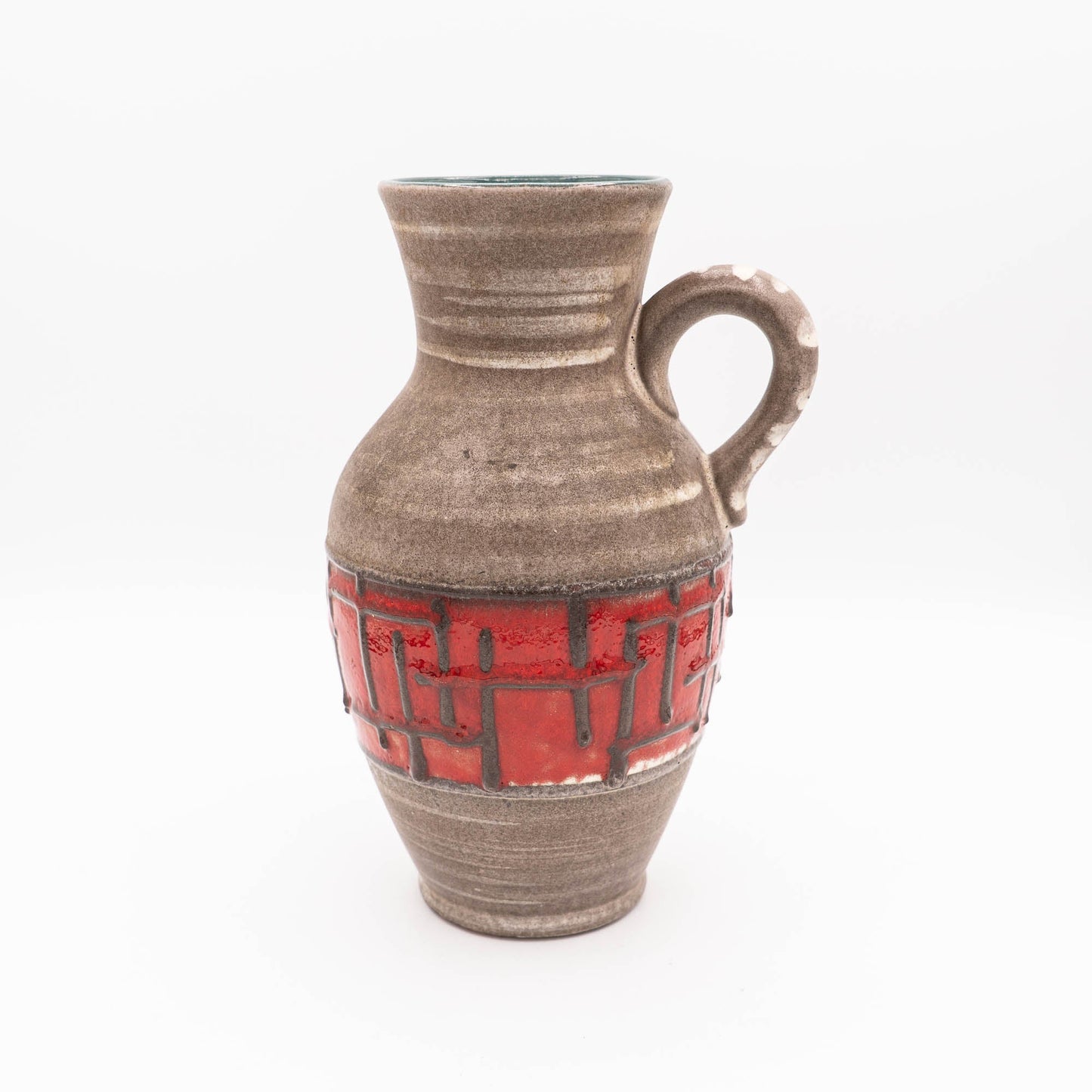
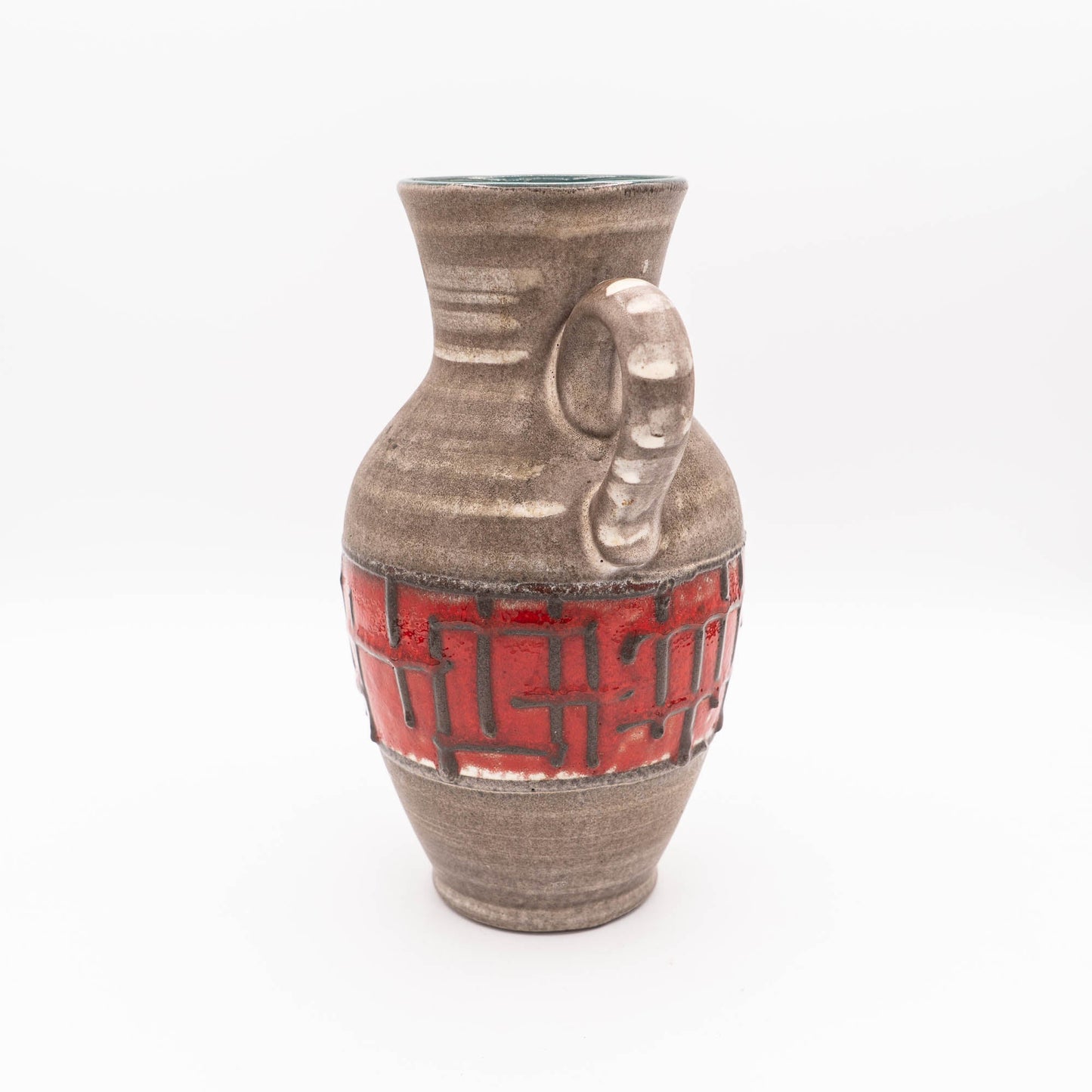
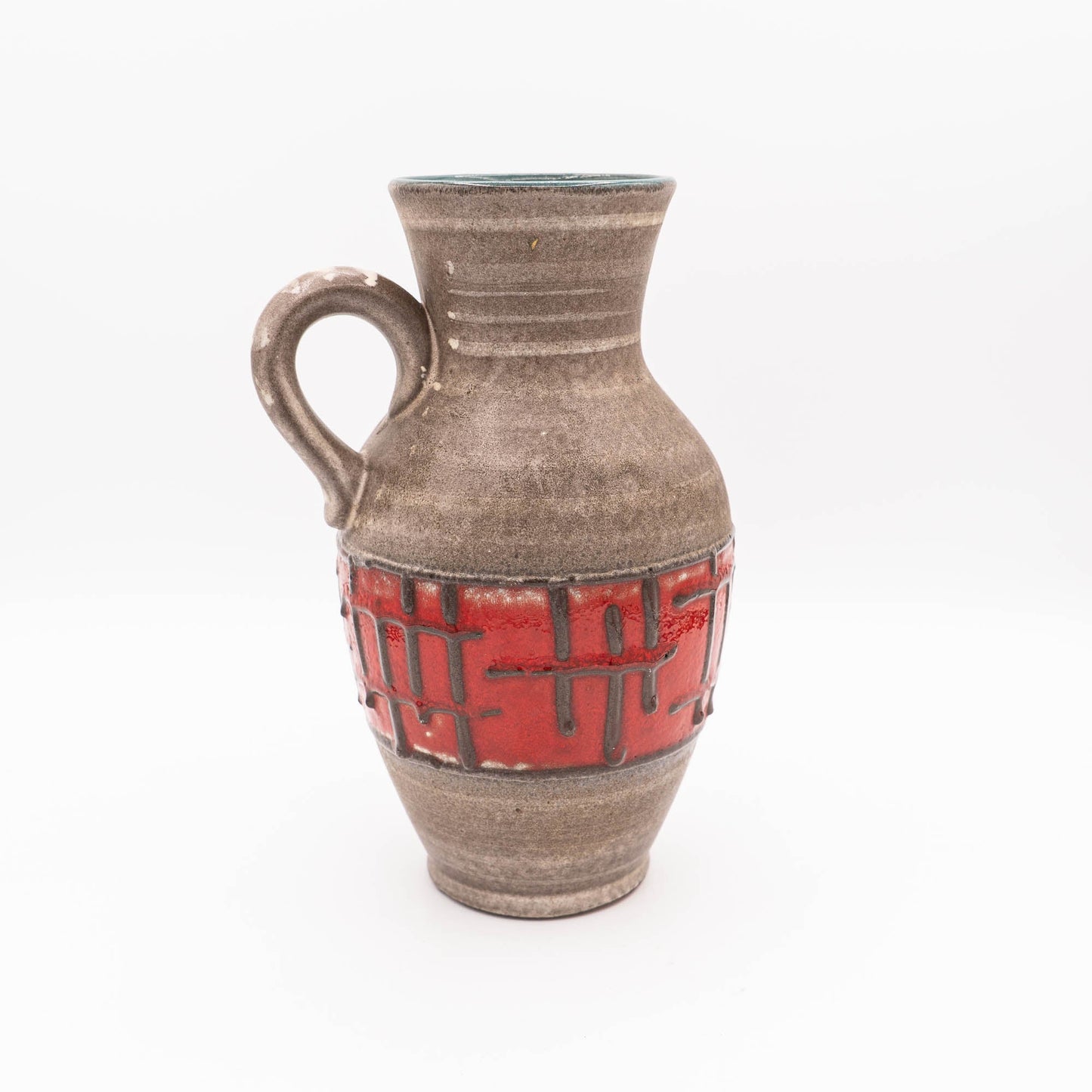
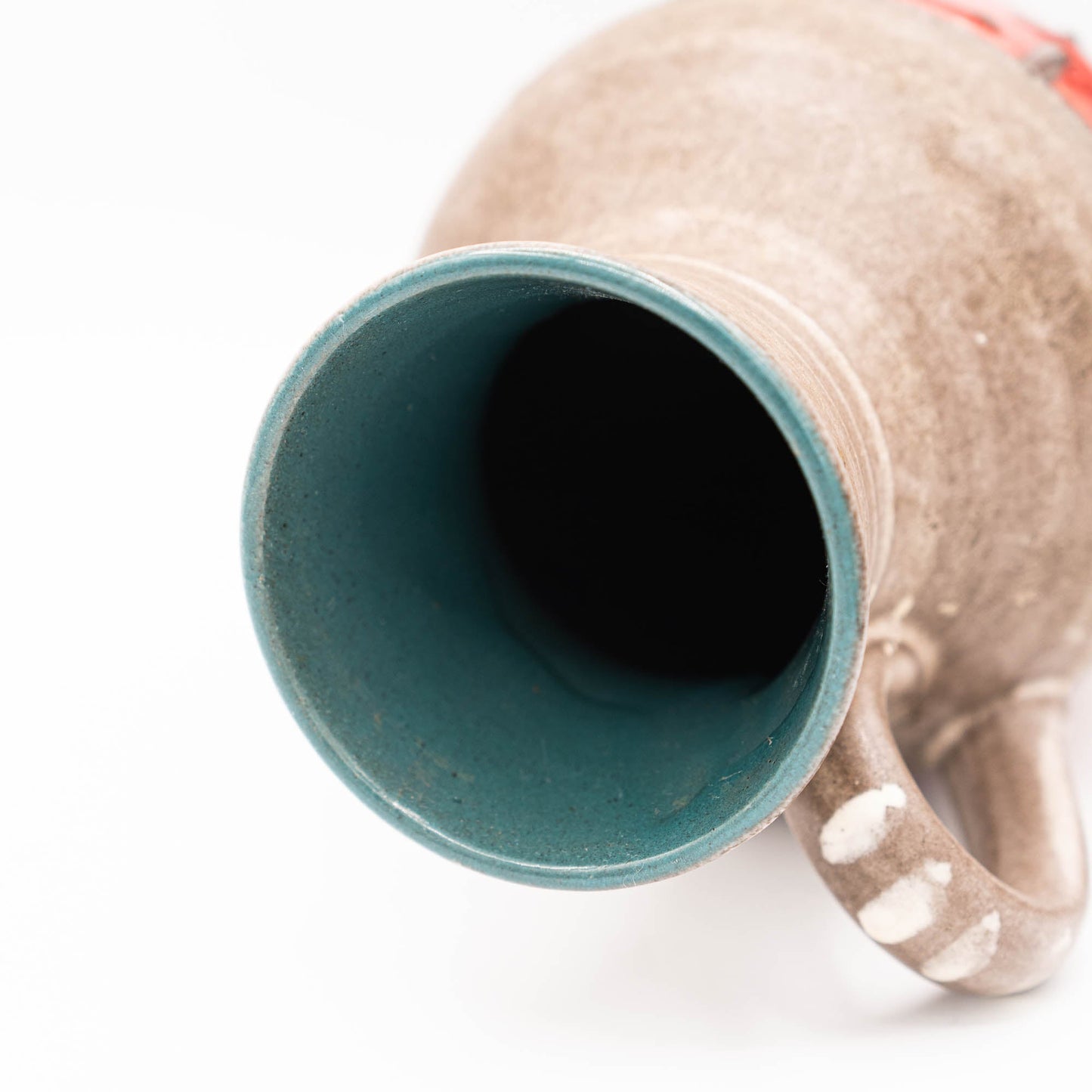
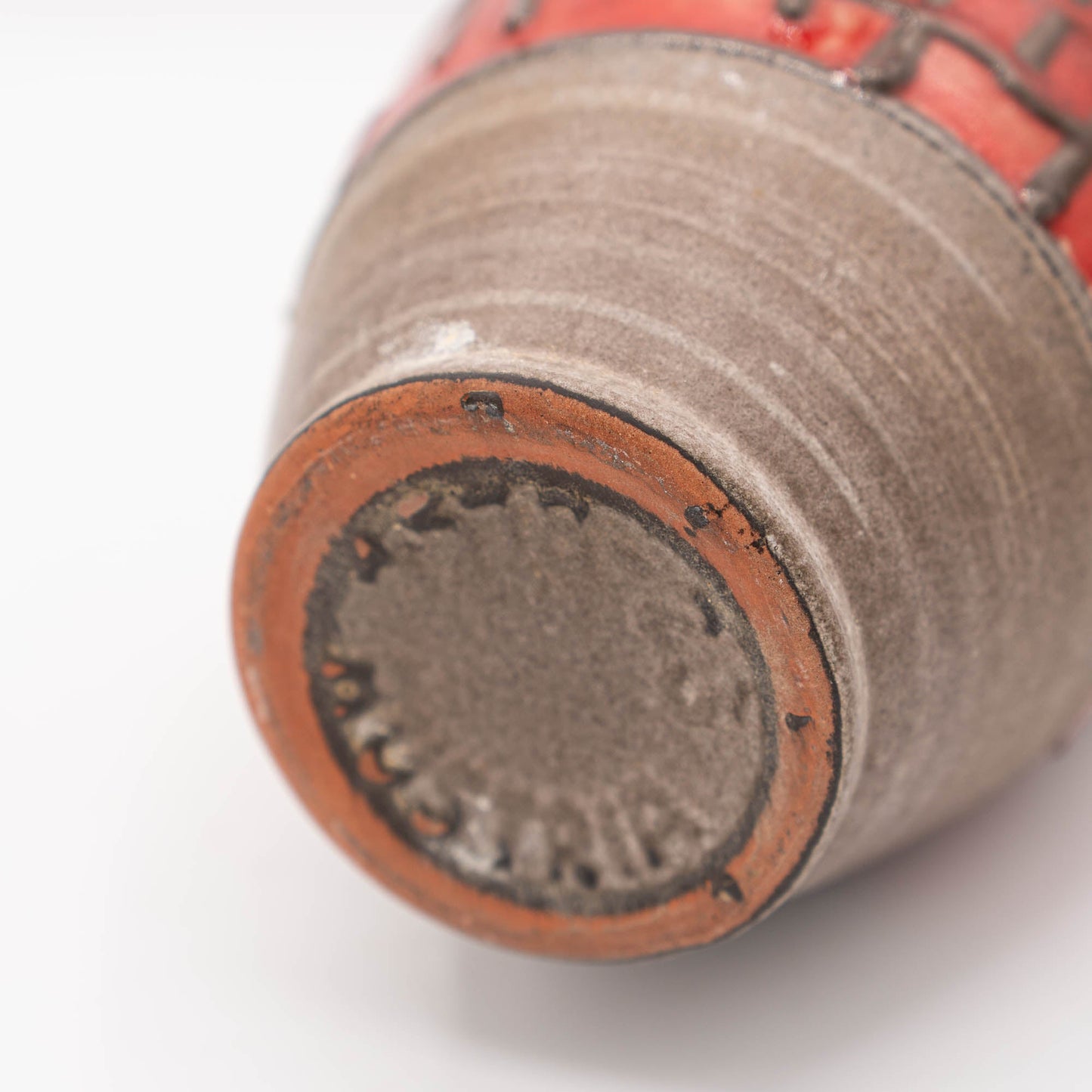
Origin & Maker
Carstens Tönnieshof was a well-known German pottery company, established in the mid-20th century and primarily associated with West German ceramics. The company was founded by Christian Heinrich Carstens and initially operated under the name "Carstens-Uffrecht." However, it wasn't until the post-war period, around the 1950s and 1960s, that Carstens Tönnieshof truly rose to prominence, producing a wide range of decorative ceramics that have become iconic pieces in mid-century design.
The company’s work is often characterised by bold, experimental forms, vibrant glazes, and unique, textured finishes. Many of their pieces, like other West German ceramics of the time, fall under the "Fat Lava" style, which became incredibly popular during the 1960s and 1970s. These designs often featured thick, volcanic-like glazes, with rich colour palettes and rugged surfaces, giving the pieces a distinctive and dramatic appearance.
Carstens Tönnieshof produced a variety of items, from vases to decorative tableware, and was renowned for their innovative use of form and glaze, often pushing the boundaries of conventional ceramic design. Today, Carstens' work is highly collectible, and their pieces remain a hallmark of mid-century modern German pottery, valued for both their aesthetic appeal and craftsmanship.
Blog posts
View all-

A Serendipitous Morning at the Rue de Bretagne ...
There are few joys in life that match the thrill of stumbling upon a hidden treasure, and for me, flea markets hold that magical allure. One of my favourite flea...
A Serendipitous Morning at the Rue de Bretagne ...
There are few joys in life that match the thrill of stumbling upon a hidden treasure, and for me, flea markets hold that magical allure. One of my favourite flea...
-

Emile Bourgeois and "Le Grand Dépôt" in Paris
Recently, I found this stunning Sarreguemines wash set. It was at the Brocante in Belfort, France. On this day, we had got up at 4 AM to be there in...
Emile Bourgeois and "Le Grand Dépôt" in Paris
Recently, I found this stunning Sarreguemines wash set. It was at the Brocante in Belfort, France. On this day, we had got up at 4 AM to be there in...
-

The Legacy of Robert Haviland: A Journey from N...
The story of Robert Haviland porcelain is one of artistry, transatlantic ambition, and enduring heritage. It begins in the mid-19th century when David Haviland, an enterprising New Yorker, founded Haviland...
The Legacy of Robert Haviland: A Journey from N...
The story of Robert Haviland porcelain is one of artistry, transatlantic ambition, and enduring heritage. It begins in the mid-19th century when David Haviland, an enterprising New Yorker, founded Haviland...








